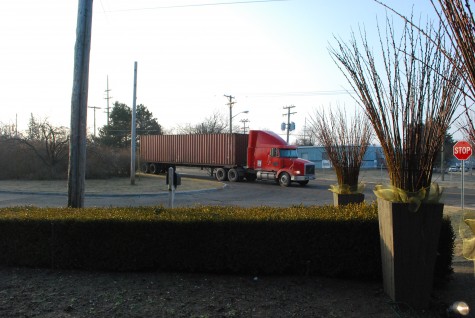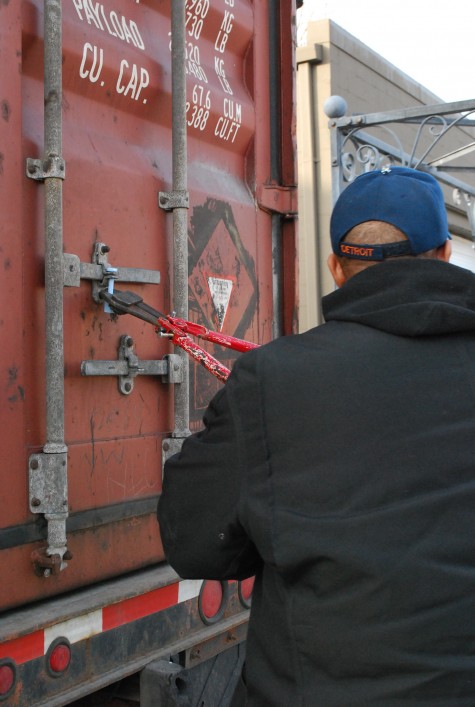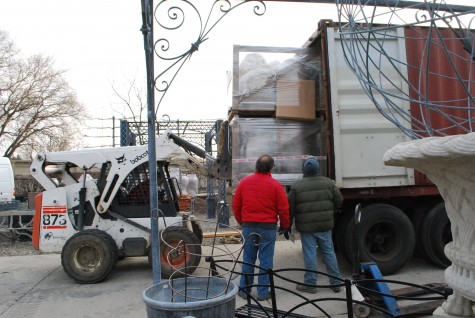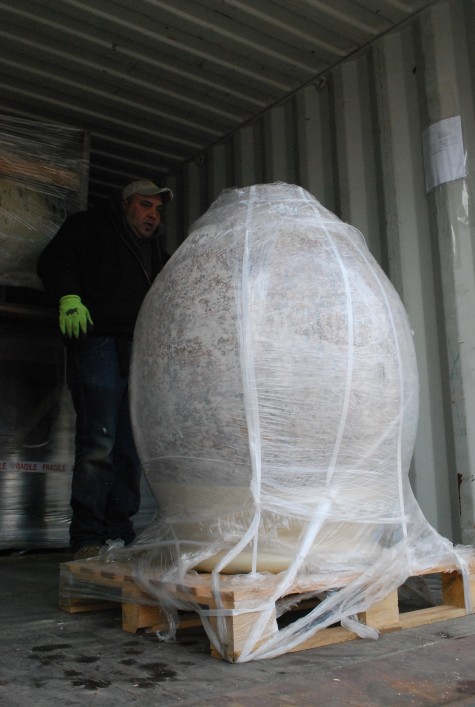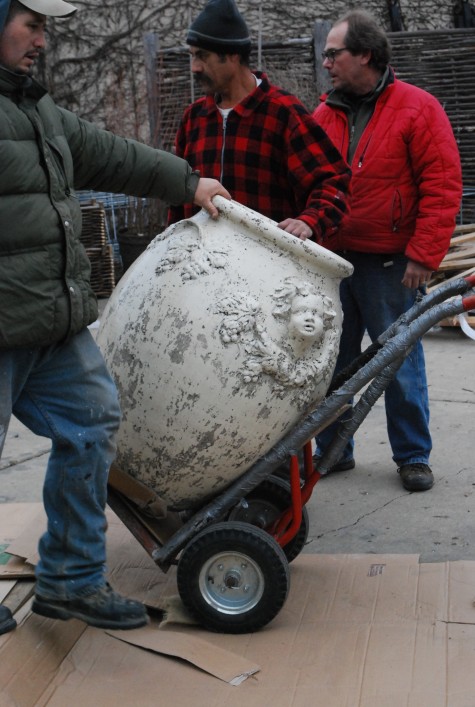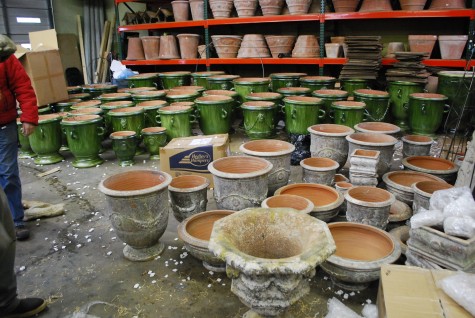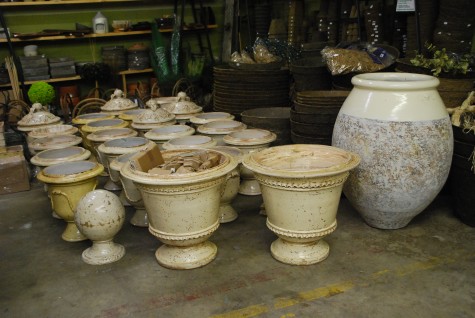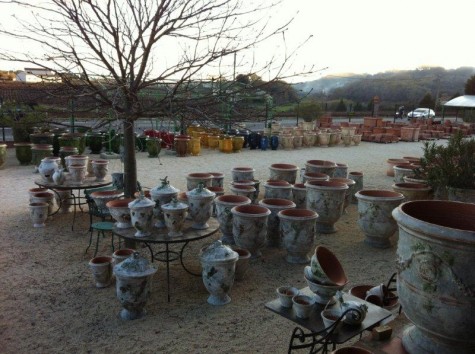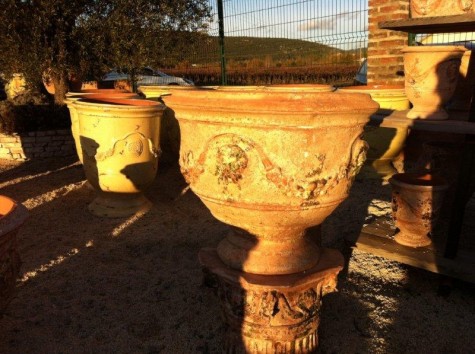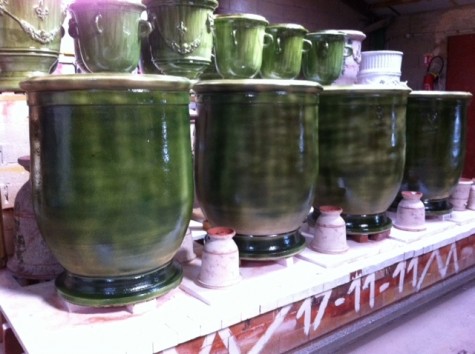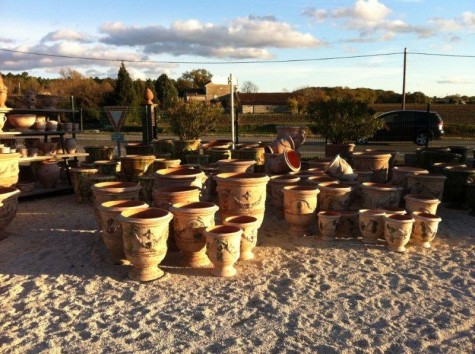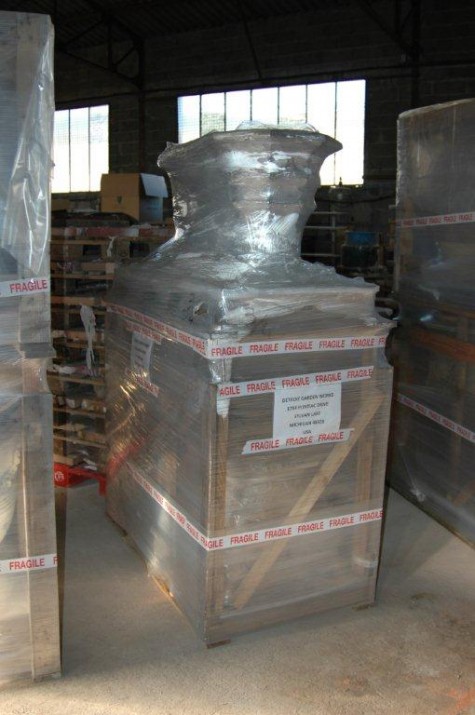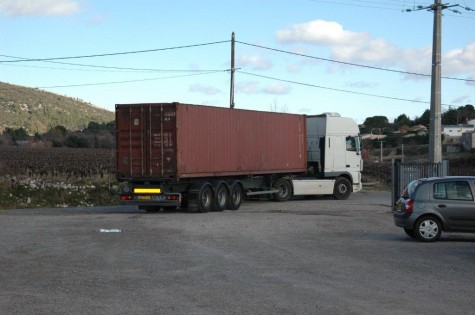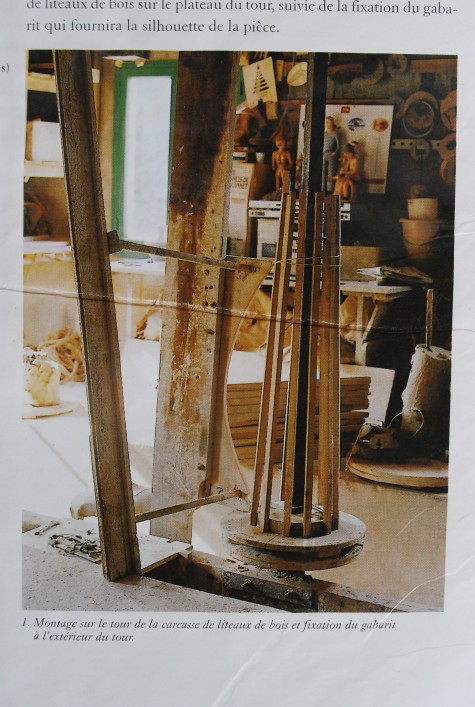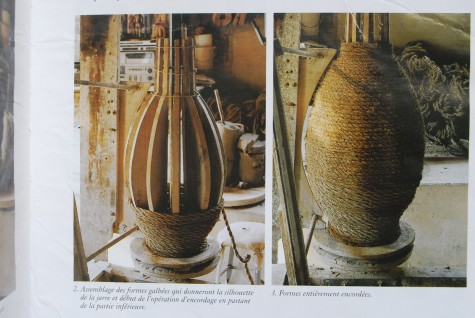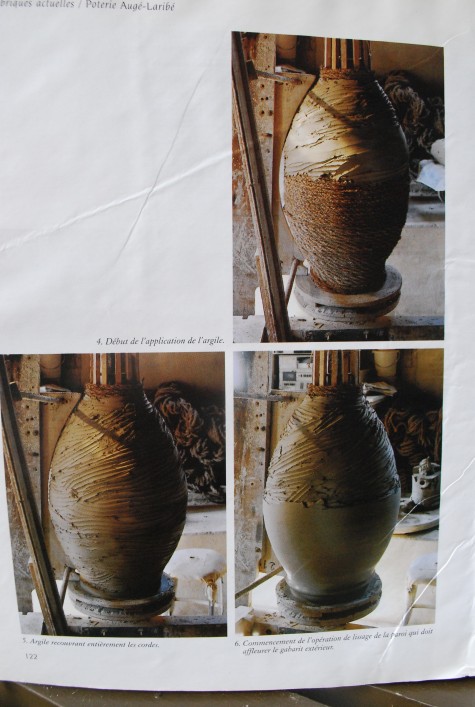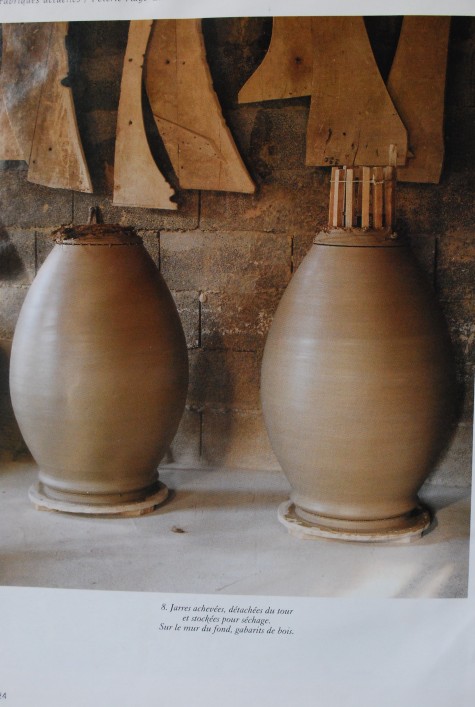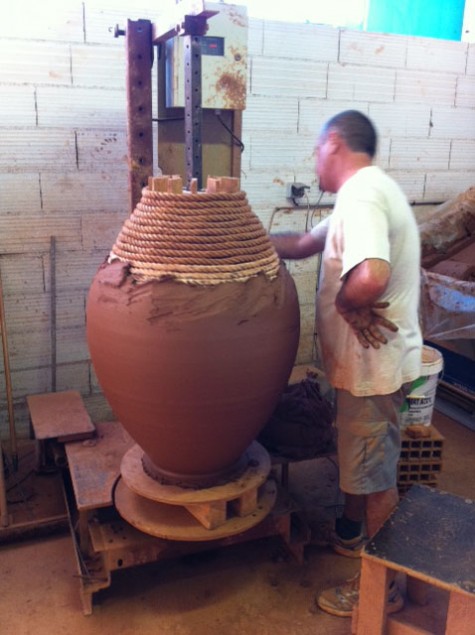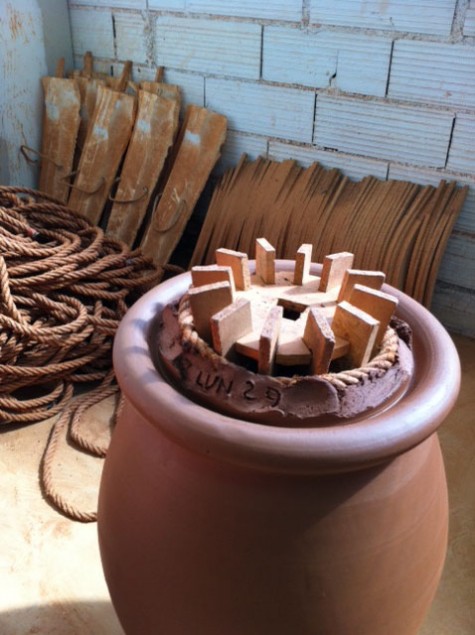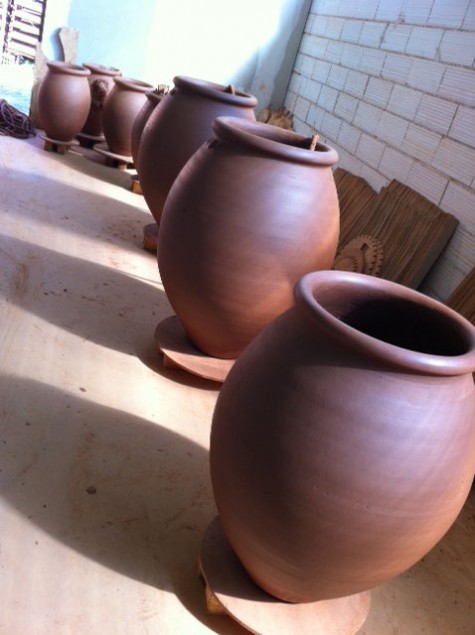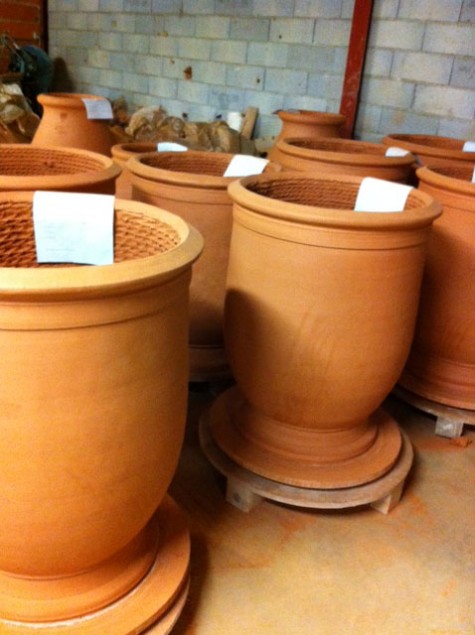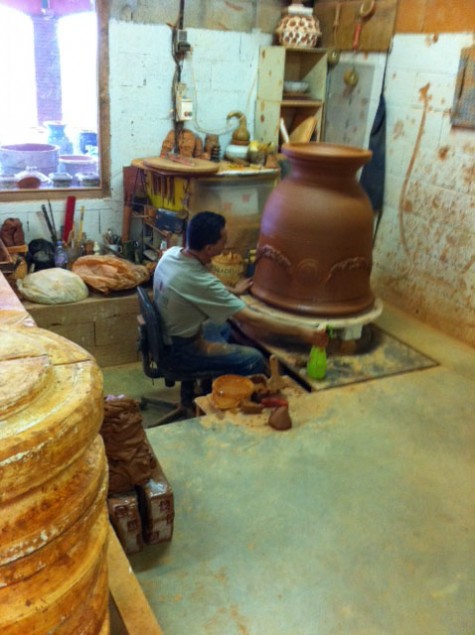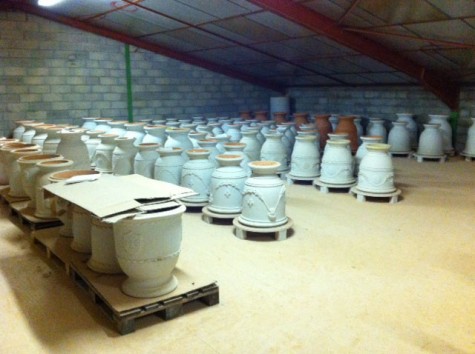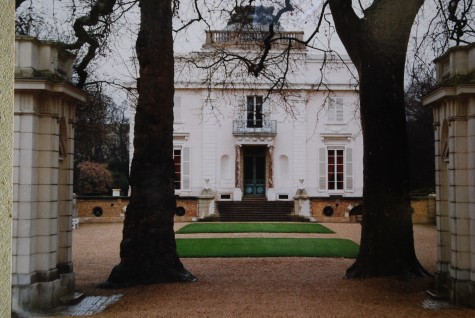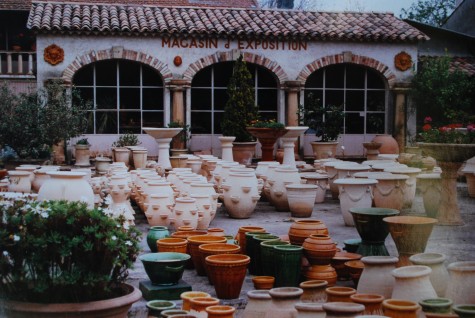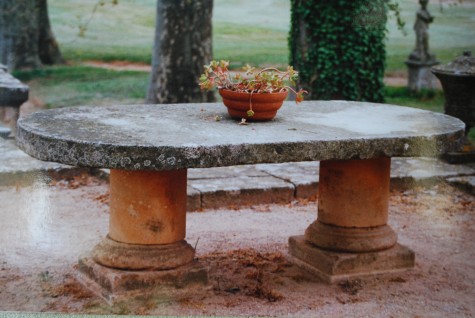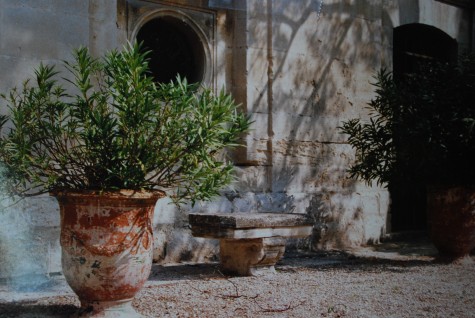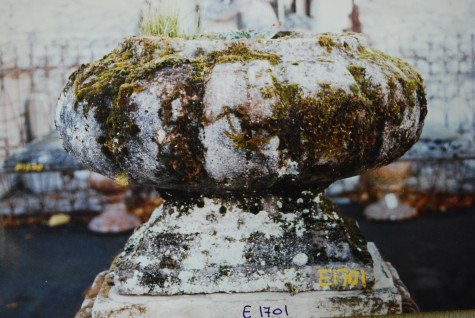Our first container from Rob’s orders in France this past September today arrived this morning around 9. Though we have imported close to 50 containers (a container being a steel box 40 feet long, by 10 feet wide, by 10 feet tall) over the past 15 years, I have yet to get over the thrill of that big truck pulling up. A container arriving is exciting.
It took this driver 6 passes to back down our narrow driveway-fewer than most. There was a little ceremony regarding the cutting of the bolt. Only I can OK the opening (unless US Customs decides to get involved). This is a perfect moment that I have had the good fortune to experience multiple times. What I imagine about Rob’s order is about to become a reality.
Rob shopped artisanal poteries in France this past September, with special orders in mind. We engaged a European agent this time, for the first time, to oversea the making and the packing of those orders; Rob has known her for years. He waved off all of my objections. He wanted someone knowledgeable to look after the manufacture and packing of our order. This proved to be a good decision.
Some of the very large pots we ordered exploded in the kiln. Some pots cracked. CM saw to getting certain pots remade. She advised us of possible substitutes. She had ideas about what might fill the small spaces in the container. An order in progress in Europe needs a European representative. The work of offloading and unpacking was an easy exercise, by comparison. The pots were expertly packed. Every single pot survived the trip without so much as a scratch or chip.
Artisanal poteries-we have a significant interest in them. They have a point of view, a style, and a way of making all their own. The quality of the pots is excellent. The large pots are incredibly heavy. The drain holes in the bottom of the large pots reveal the clay is close to 2 inches thick. Our idea is to make handmade and individually designed pots available to gardeners with a passion much like ours.
This handmade French pot is of a size that commands attention. Most of the pots Rob ordered are of a size that is neighborhood friendly. But we have a few that are show stoppers.
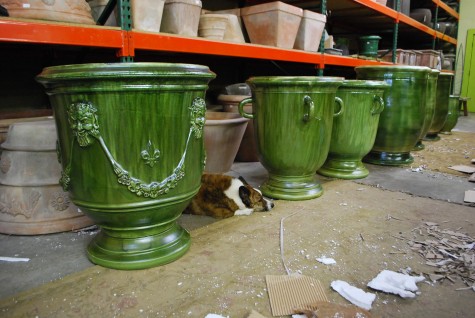 The green glazed French pots are very handsome. This color comprises the bulk of our order. Though I was disappointed not to have any pale blue pots, I understand Rob’s idea. He likes a collection that has considerable depth, rather than breadth. This specific glaze specified by Rob is closer to an eggshell finish than the traditional high gloss. We really needed that spot where Howard chose to settle in, but he likes being close to the action.
The green glazed French pots are very handsome. This color comprises the bulk of our order. Though I was disappointed not to have any pale blue pots, I understand Rob’s idea. He likes a collection that has considerable depth, rather than breadth. This specific glaze specified by Rob is closer to an eggshell finish than the traditional high gloss. We really needed that spot where Howard chose to settle in, but he likes being close to the action.
The face pots-I requested 4 of these. The glaze is shockingly beautiful in person. I had never seen a glazed French pot with a white, grey, and black surface such as this. As for the cherubic faces and grape garlands-I am charmed by them.
We unpacked many pots today-all of them architectural, some just plain gorgeous, some with rustic and highly textural finishes. Hidden in one of the pots, a thank you in the form of two bottles of French wine.
I have a foursome of white glazed vases in the classic Anduze style in my possession. These vases are better than 4 feet tall. The possibilities for planting them? Just about limitless. Not to mention that these pots would look equally great unplanted. The best reason I can think of for investing in beautiful garden pots is how they persuade me to plant them, year after year. 
We had a substantial lot of pots delivered today. The garage that was empty yesterday is stuffed with garden pots-handmade French garden pots today. My 10,000 square foot building is bulging at the seams, and we still have another container, and all of our domestic spring orders to go. Thia is as it should be-trying to find places for everything.
These cream and yellow pots are elegant and graceful.
The glaze on these pots-very rustic and markedly textured-is quite subtle. The peach colored clay of the inside contrasts warmly with that muted grey finish.
At the end of this day, I was really tired. It took the entire day to unpack. I barely had time to admire them.
Luckily I will have a little time to get to know them before the shop gets busy again.
